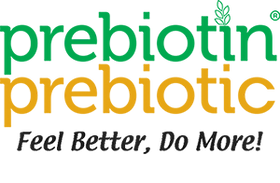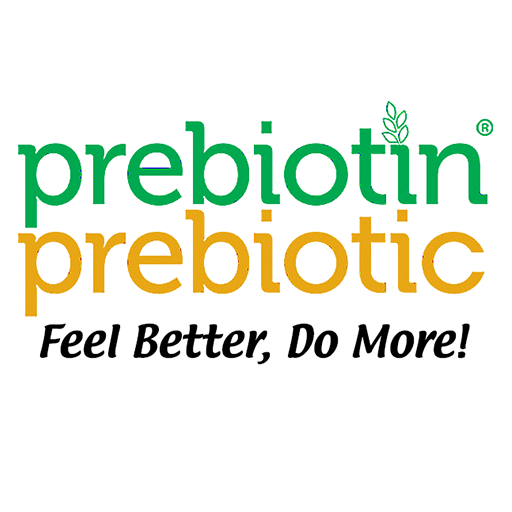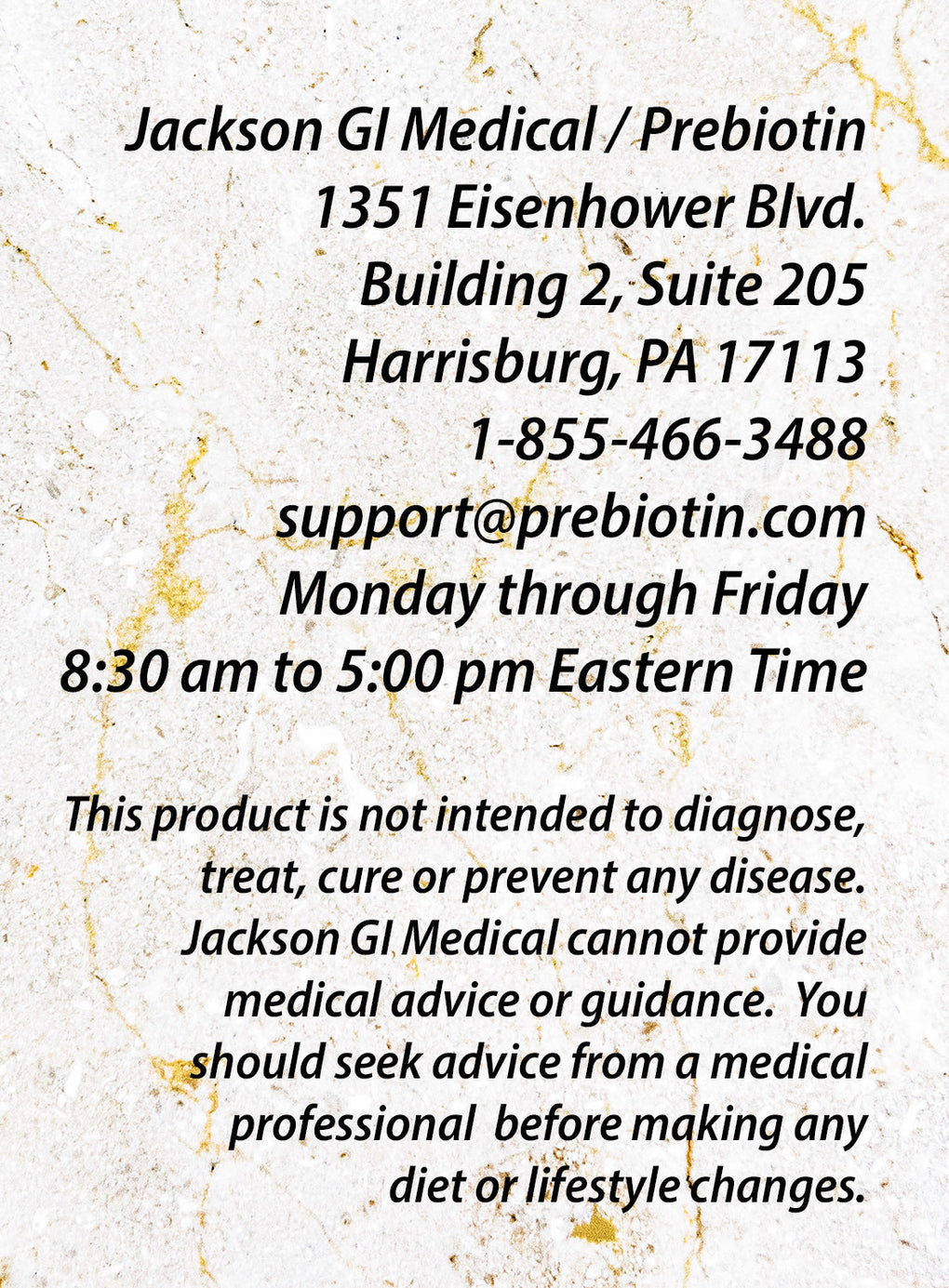
by Dr. Frank Jackson
Prebiotin Academy
Medical Concerns, Scientific Research and Diets
High Fiber Diet
Resources on this page:
CURRENT NEWS
The bifidobacteria facilitate a healthy gut environment that does not represent a favorable living environment for potentially dangerous pathogen bacteria, thus catalyzing overall well-being beyond digestive health. Ingesting chicory root fiber means you are serious about offering prebiotic effect because inulin and oligofructose are the only proven plant-based prebiotics that allow manufacturers to convey a credible message to consumers. Prebiotin is sourced from chicory root, the best and highest quality.
Read more about this topic:
from September 22, 2023 for NutritionInsight.com
Diet
What is Dietary Fiber?
All fiber comes from plants, bushes, vines or trees. Of course, the ones that we eat provide us with fruits, vegetables, and grains. There are many different types of fiber but the three that are most important to the health of the body are:
Insoluble Fiber
This fiber does not dissolve in water, nor is it fermented by the bacteria residing in the colon. Rather, it retains water and in so doing, helps to promote a larger, bulkier and more regular bowel activity. This, in turn, may be important in preventing disorders such as diverticulosis and hemorrhoids, and in sweeping out certain toxins and cancer causing carcinogens. Sources of insoluble fiber are:
- whole grain wheat and other whole grains
- corn bran, including popcorn, unflavored and unsweetened
- nuts and seeds
- potatoes and the skins from most fruits from trees such as apples, bananas, and avocados
- many green vegetables such as green beans, zucchini, celery and cauliflower
- some fruit plants such as tomatoes and kiwi
Soluble Fiber
These fibers are fermented or used by the colon bacteria as a food source or nourishment. When these good bacteria grow and thrive, many health benefits occur in both the colon and the body. Soluble fiber is present in some degree in most edible plant foods, but the ones with the most soluble fiber include:
- legumes such as peas and most beans, including soybeans
- oats, rye, and barley
- many fruits such as berries, plums, apples bananas and pears
- certain vegetables such as broccoli and carrots
- most root vegetables
- psyllium husk supplement products
Prebiotic Soluble Fiber
These are relatively newly discovered soluble plant fibers. The technical name for this fiber is inulin or fructan. When these soluble fibers are fermented by the good colon bacteria, some further significant health benefits have been shown to occur by research in many medical centers. These soluble prebiotic fibers occur in significant amounts in:
- asparagus
- yams
- onions
- garlic
- bananas
- leeks
- agave
- chicory and other root vegetables such as Jerusalem artichokes
- wheat, rye, and barley (smaller amounts)
Benefits of a High Fiber Diet
The health benefits of a high-fiber diet, consumed on a regular basis and reaching recommended amounts (below), are now fairly well-defined. There are some additional benefits in the early research stage with the prebiotic soluble fibers. What is now known regarding a high fiber diet include:
Bowel Regularity
A high fiber diet promotes regularity with a softer, bulkier and regular stool pattern. This decreases the chance of hemorrhoids, diverticulosis and perhaps colon cancer.
Cholesterol and Reduced Triglycerides
The soluble fibers are the ones that will reduce cholesterol levels when used on a regular basis. Psyllium husk and prebiotic soluble fiber will also reduce cholesterol. They may also reduce the incidence of coronary heart disease. Oats, flax seeds,, and legumes or beans are the recommended fibers.
Colon Polyps and Cancer
It is still not certain if a high fiber diet helps prevent colon cancer. Considerable research suggests that this may occur. Certainly, it makes sense to increase regularity and so speed the movement of cancer causing carcinogens through the bowel. In addition, reducing a heavy meat diet reduces the bile flow from the liver in a favorable way. This, too, reduces the number of carcinogens that reach and are manufactured in the colon. Finally, a high fiber diet, including prebiotic soluble fiber, increases the integrity and health of the wall of the colon. The risk of cancer may be reduced.
Colon Wall Integrity
A high fiber diet changes the bacterial makeup of the colon to a more favorable balance. For instance, it is known that those people with obesity, diabetes type 2 and inflammatory bowel disease have a predominance of bad bacteria in the colon. This, in turn, may render the bowel wall weak and allow bacteria and, indeed, even toxins to seep through. A high fiber diet with a modest reduction in animal and meat products may return the bacterial makeup to a more positive balance. This, in particular, has been seen when the soluble fiber prebiotics are added to the diet.
Blood Sugar
Soluble fiber such as in legumes (beans), oats and in prebiotic fibers slows the absorption of blood sugar and so helps regulate the sugar in the blood. Insoluble fiber on a regular basis is associated with reduced risk of type 2 diabetes.
Weight Loss
High fiber diets are more filling and give a sense of fullness sooner than an animal and meat based diet does. In addition, the soluble prebiotic fibers have been shown to turn off the hunger hormones and to increase the hormones that give a sense of fullness. Those hormones are made in the wall of the gut. New medical research has shown that the bacterial makeup in the colon in overweight people is abnormal to the extent that they manufacture and absorb almost twice the number of calories as do normals. Prebiotic fibers (below) will help change this bacterial balance in a favorable way.
Bacteria and the Function of the Colon
The colon finishes the digestive process. Hopefully, the waste products move through in a nice regular manner. Insoluble fibers help this process by retaining water and so producing a bulkier, softer stool, which is easy to pass.
The additional role of the colon is to provide a home for an enormous number of micro-organisms, mostly bacteria. Recent research has shown that there are over 1,000 species of bacteria with a total bacterial count ten times the number of cells in the body. These bacteria play a major role in keeping the colon wall itself healthy. In addition, these good bacteria produce a very strong immune system for the body. They significantly increase calcium absorption and bone density. They provide many other documented benefits. It is the soluble fibers in the diet that are so effective in stimulating the growth of good colon bacteria.
How Much is Enough?
The amount of fiber in food is measured in grams. National nutritional authorities recommend the following amounts of dietary fiber daily.
| Under Age 50 | Over Age 50 | |
| Men | 38 grams | 30 grams |
| Women | 25 grams | 21 grams |
For a week or so, it is best to tally the amount of fiber you are consuming. Boxed and packaged foods will have the amount of fiber per serving on the nutrition label. For fresh foods of any type, you can click the following site and get the total fiber, insoluble and soluble grams per serving.
Which Fibers and Which Foods are Best?
As noted, healthy fiber is only found in plants. The three major categories are whole grains, fruits, and vegetables.
Whole Grains
Wheat, oats, barley, wild or brown rice, amaranth, buckwheat, bulgur, corn, millet, quinoa, rye, sorghum, teff and triticals. By far, wheat, oats and wild or brown rice are most common. Always buy whole grain products. White bread, baked goods and rolls almost always are made from wheat flour. Wheat flour is white because most of the fiber, vitamins and other nutrients have been removed. Try not to buy enriched grains. What this means is that simple white flour has had vitamins added to it by the manufacturer. The word, enriched, implies a good and healthy product. On the contrary, enriched means that most of the fiber has been removed and a few vitamins added.
Fruits
Fruits come from trees such as apple and pear or from bushes or vines. You should eat a wide variety of fruits, preferably with every meal. In many cases, the skin of a fruit such as an apple will contain much of the insoluble fiber while the pulp contains most of the soluble fiber. To the extent possible, buy organic fruits as these will have little or no pesticides. Always wash fruit.
Vegetables
Eat a wide variety of vegetables. They should be a mainstay of lunch and dinners. Frozen vegetables retain as much nutrition and fiber as fresh vegetables. As with fruit, try to buy organic to reduce any residual pesticide ingestion. Wash fresh vegetables thoroughly.
Cruciferous vegetables such as broccoli, Brussels sprouts, and cauliflower contain certain chemicals such as sulforaphane. This substance has very strong anti-cancer properties and should be eaten frequently.
Legumes, Beans, Peas, and Soybeans
These vegetables have plenty of soluble fiber and should be part of a varied vegetable intake. Beans, in particular, contain a certain type of fiber that may lead to harmless gas or bloating.
Nuts and Seeds
These are rich sources of fiber and are a good substitute for sweets such as candies and baked sweet goods. While nuts and seeds are rich in fiber, they also contain vegetable fat and so can and do add calories.
Read the Labels
As noted, fresh and frozen foods are usually better. They have good nutrition and few, if any, chemicals added to them. When buying packaged foods and, in particular, grains, look for three things:
- The first word on the label should be whole, such as whole wheat or whole grain.
- Check out the calories and the amount of fiber in a serving.
- How many and what other additives or chemicals are added. Fewer is always better. Do you know what each additive does? Some are added not for the benefit of the buyer but rather for manufacturers. These could and do include sugar, artificial flavor, chemicals to prevent oxidation and spoilage, emulsifiers to blend the product. You have to be a detective.
Fiber Facts, Nuggets and Pearls
- For breakfast, you can easily get the day started well by using a high fiber, whole grain cereal. Check the labels. Add fruit such as blueberries and bananas. If you are an egg eater, use whole wheat or grain toast. Adding wheat germ gives you a good fiber kick.
- Always use whole grain or wheat with rolls and sandwiches. Does your fast food store not have them? Perhaps you look elsewhere. Eating an occasional black bean or veggie burger provides variety.
- Snacks should consist of fruit and/or nuts. While nuts are loaded with fiber, they are an energy rich food, meaning they have a lot of calories in a small packet.
- Fruit juices should contain pulp. Clear juices such as clear orange, pear or apple juice contain little fiber and have a lot of fructose. Prune juice is usually high in fiber.
- Homemade soups – adding fresh or frozen vegetables to a chicken or vegetable stock is a good way to start the homemade soup.
- Salads – adding cooked and then chilled vegetables provide great flavoring to almost any salad. Remember, a Cobb salad has lots of cooked corn in it. Small slices of apples or oranges and nuts such as chopped walnuts or sliced almonds always add taste, variety, and fiber to almost any salad.
- Fruit – Try to eat fruit of some type with almost every meal.
- Rethink how you place the various foods on your dinner plate. Reducing the portions of the meat or animal food portion to the side with equal or more portions of vegetables, legumes and fruits portion always allow for more fiber. There was never anything magic about making the meat or animal food portion the main part of the dinner plate. Eating from smaller plates can, over time, trick your mind and long term habit of using a dinner plate. Again, there is nothing magic in an 11 or 12-inch dinner plate.
Fiber Supplements
There are a variety of fiber supplements available on the food or pharmacy shelves.
Psyllium
This soluble plant fiber has been used in India for over 2,000 years. It is a soluble fiber with mucilage in it. This acts to retain a lot of water and also is fermented by colon bacteria. When 7 grams a day are used, it does lower cholesterol. Metamucil in various forms is psyllium.
Methyl Cellulose
All the cellulose products come from finely ground wood chips which are then treated in a variety of ways such as boiling in acids. Methylcellulose is an insoluble fiber which does dissolve in water. It is also an emulsifier, meaning it blends oils and water. Citrucel is methyl cellulose (MC). MC may not be appropriate for Crohn’s disease or ulcerative colitis as several medical studies have shown that certain emulsifiers dissolve the mucous lining of the colon in animals prone to Crohn’s disease. This then allows bacteria to invade the underlying tissue.
Inulin
Inulin is a true soluble fiber prebiotic found in many foods. It is available as generic inulin and in Fiber Choice.
Prebiotin
This product is a combination of oligofructose, which feeds the bacteria in the right side of the colon and inulin, which does the same in the left side of the colon. There seems to be a benefit for this particular formula based on medical research.
Prebiotic Soluble Fiber
These may be the healthiest of all the soluble fibers. They grow in many plants and have had a great deal of research done on them in the last 10-15 years. These fibers are found in asparagus, yams and other root vegetables such as chicory, garlic, onion, leeks and in smaller amounts in wheat. This research has shown the following:
- Increase in good and decrease in bad colon bacteria
- Increase calcium absorption and enhanced bone mass
- Enhanced immune system
- Appetite and weight control by changing the hormone appetite signals to the brain
- May decrease colon cancer incidence
Eating a wide variety of plant food up to the recommended amount will likely give you enough prebiotic fiber. Supplements such as Prebiotin can be added to the diet.
Short Chain Fatty Acids (SCFA)
Some rather remarkable research findings have shown that one of the benefits of ingesting a lot of soluble fiber, in particular, the prebiotic ones, results in larger amounts of SCFAs in the colon. These SCFAs are made by the good bacteria in the colon such as Bifidobacteria and Lactobacillus. These small molecules have been shown to do the following:
- Enhance the health and integrity of the colon wall
- Provide nourishment for the cells that actually line the colon
- Increases the acidity of the colon which is a very real health benefit
- Stabilize blood sugar for diabetics
- Reduce blood cholesterol and triglyceride
- Significantly enhance immunity
- Maybe a benefit for Crohn’s disease and ulcerative colitis patients
Fiber and Gas
Everyone has intestinal gas and that is a good thing. It means that bacteria, hopefully, the good ones, are thriving. The normal amount of flatus passed each day depends on sex and what is eaten. The normal number of flatus is 10-20 times a day. When the bacteria that make intestinal gases are growing, it also means that other good bacteria are using the same fibers to grow and produce multiple health benefits, including the production of healthy short-chain fatty acids. These substances are produced quietly in the colon and produce many health-related outcomes.
Soluble fiber should always be used in a gradual manner. If too much is consumed at any one time, then excess, but harmless, intestinal gas can occur. People with irritable bowel syndrome are particularly prone to bloating and mild cramping. In this instance, a soluble fiber in the diet or supplement should be used in small doses and increased gradually.
Finally, prebiotic fibers tend to cause the production of short-chain fatty acids which acidify the colon. This, in turn, reduces or stops the growth of bacteria that make the smelly hydrogen sulfide gases that produce noxious flatus. People who consume many vegetables with prebiotics or take a prebiotic fiber supplement often have non-odoriferous flatus.
Fiber and Irritable Bowel Syndrome
Irritable bowel syndrome (IBS) is one of the most common disorders of the lower digestive tract. The symptoms of IBS can be quite varied. They can be a mix of several symptoms such as constipation, diarrhea, crampy abdominal discomfort, bloating and gas. An attack of IBS can be triggered by emotional tension and anxiety, poor dietary habits and certain medications. It is now known that infections in the intestine can lead to long-term IBS symptoms. Increased amounts of fiber in the diet can help relieve the symptoms of irritable bowel syndrome by producing soft, bulky stools. This helps to normalize the time it takes for the stool to pass through the colon. Recent medical research with newer techniques has shown some surprising and dramatic findings for IBS patients. Specifically, there is a very significant and abnormal shift of bacteria from those that provide health benefits to those bad bacteria that we really do not want in the gut. The technical name for this bad group of bacteria is called Firmicutes. Along with this abnormal bacterial collection, there is a smoldering low-grade inflammation in the gut wall that may contribute to symptoms. The goal for IBS patients should be to gradually increase the soluble dietary fibers in the diet so as to promote the growth of good bacteria and so suppress the bad ones along with the associated inflammation.
IBS patients need to be careful of the amount of soluble fiber they consume. The reason for this is that, while the good colon bacteria thrive on these fibers and produce health benefits, other gas-forming bacteria may generate excessive but harmless gas and subsequent bloating. Thus, soluble plant fibers or a dietary prebiotic supplement should be taken in small initial doses and then gradually increased to tolerance.
Fiber and Colon Polyps/Cancer
Colon cancer is a major health problem. This disease is most common in Western cultures. It is not seen very often in rural African cultures. Usually, colon cancer starts out as a colon polyp, usually a benign mushroom-shaped growth. In time it grows, and in some people it becomes cancerous. Colon cancer is usually always curable if polyps are removed when found or if surgery is performed at an early stage. It is now known that people can inherit the risk of developing colon cancer, but diet is important, too. As noted, there is a very low rate of colon cancer in residents of countries where grains are unprocessed and retain their fiber. It seems that in the Western world, cancer-containing agents (carcinogens) remain in contact with the colon wall for a longer time and in higher concentrations. So, a large bulky stool may act to dilute these carcinogens by moving them through the bowel more quickly. Less carcinogenic exposure to the colon may mean fewer colon polyps and less cancer. A very current review of the entire world’s literature on the effect of fiber on colon polyps and cancer prevention has shown rather clearly that for every 10 grams of fiber added to the diet, there is a 10% reduction in the incidence of cancer. So the recommended 30-gram fiber diet would result in a 30% less chance of getting these tumors.
There are also substances produced in the colon by the good bacteria that seem to retard certain pre-cancer factors from developing. They are called short-chain fatty acids (SCFA). See above for a description of SCFAs. A high fiber diet increases these substances. So, the combination of dietary fiber and the production of short-chain fatty acids have a clear health benefit.
Fiber and Diverticulosis
Prolonged, vigorous contraction of the colon over a long period of time may result in diverticulosis. This increased pressure causes small and, eventually, larger ballooning pockets to form. These pockets by themselves cause no problem. However, sometimes they become infected (diverticulitis) or even break open (perforate) causing infection or inflammation within the abdomen (peritonitis). A high fiber diet increases the bulk in the stool and thereby reduces the pressure within the colon. By so doing, the formation of pockets may be reduced or possibly even stopped.
In the past, many physicians were fearful that seeds as in tomatoes, nuts or berries were harmful and could get inside these pockets and rattle around, causing damage. We now know that this has never been the case and that these foods contain lots of fiber and are actually beneficial for diverticulosis patients.
Certain bulking agents such as psyllium are traditional types of bulk producing supplements. Psyllium is a soluble fiber. Combining it with insoluble fiber as in wheat bran or corn bran (no gluten) can enhance this bulking effect even more. A product containing a prebiotic, psyllium and wheat bran is probably a very good combination for bowel regularity. Prebiotin Regularity is one such product.
Inflammatory Bowel Disease (IBD)
IBD means Crohn’s Disease (CD) or Ulcerative Colitis (UC). CD is an inflammation of the lower small bowel and/or the colon. Bacteria actually invade and cause inflammation in the entire wall of the intestine. UC, on the other hand, is an inflammation just of the lining of the colon. It usually starts in the rectum and left colon and may spread to the entire colon from there. It is now known that in both CD and UC that the bacterial makeup is abnormal. This means that there are significantly more of the bad bacteria present than the good ones. These abnormal bacteria are called Firmicutes.
Fiber and Crohn’s Disease
There is now some information in the medical literature on what type of diet may be harmful and what may help Crohn’s Disease. A reduction in red meat is likely helpful. So is reducing the fat in the diet, including vegetable oils. More importantly, people who had low fiber ingestion in the diet had a greater chance of getting CD. So, a gradual increase in the amount of fiber is likely helpful in hopefully preventing CD. This should always be done in conjunction with the physician. It should be done gradually and should include soluble fibers which fertilize the best colon bacteria. The good bacteria grow and push out the bad ones. These good bacteria provide short-chain fatty acids, which can help heal the bowel wall. Prebiotics such as Prebiotin are available. You can go to Crohn’s Disease Diet for more dietary information.
Fiber and Ulcerative Colitis
We still do not have strong evidence in the medical literature on what is the best diet for UC. Eating plenty of soluble fiber, including prebiotic fibers will nourish the best colon bacteria. It is hoped that this will result in a decrease in the bad or Firmicutes bacteria. It is well-known that when the good bacteria proliferate that they produce lots of acid substances called short-chain fatty acids (SCFA). The SCFAs actually nourish the cells of the colon wall, the very ones that become inflamed in UC. In addition, when the colon contents become acid, the smelly sulfide gases are not produced and the flatus becomes less noxious and may even have no smell at all. This may have a beneficial effect on the inflammation. Prebiotics such as Prebiotin are the best type of soluble fiber. You may go to Ulcerative Colitis Diet for more dietary information.
Health Benefits From Prebiotic Fibers
There is now ample information in the medical literature to indicate that a prebiotic rich diet leads to demonstrable health benefits. These include:
- Increased calcium absorption
- Stronger bones and bone density
- Enhanced immunity
- Reduced allergies and asthma in infants and children
- A lower blood triglyceride level
- Appetite and weight control
- Lower cancer factors in the gut
Insoluble Fiber
As noted, this fiber, also known as roughage and bulk, does not dissolve in water but paradoxically does hang onto water in the large bowel. This creates a larger, softer and bulkier stool. It promotes regularity and seems to be associated with reduced chance of getting colon polyps and cancer, as cancer inciting agents such as carcinogens are swept through the bowel in a more rapid manner. In addition, it may promote weight loss and enhances diabetic control. These fibers are not fermented by colon bacteria and so do not produce colon gas.
Foods that are particularly high in insoluble fiber are:
- whole wheat bread and baked goods
- wheat bran
- whole gran breads
- vegetables and fruit, especially the skins
- peanuts
- brazil nuts
- popcorn
- brown rice
The page, Fiber Content of Foods provides the insoluble fiber content of many foods.
Soluble Fiber
This plant fiber does dissolve in water. In the colon, it provides food for the enormous number of bacteria that thrive there and, in so doing, provides many health benefits. Those fibers also promote regularity by
increasing the growth of the colon bacteria. However, soluble fibers are the ones that some colon bacteria metabolize and so produce some colon gas.
Foods that are particularly high in soluble fiber are:
- oats in any form - cereal, muffins, etc.
- apples, oranges, grapefruit, peaches, concord grapes
- prunes, pears, cranberries
- beans
- beets
- carrots
- psyllium (found in supplements and some cereals
The page, Fiber Content of Foods provides the soluble fiber content of many foods.
Explore More
Medical Concerns, Scientific Research and Diets
-
Antibiotics and the Microbiome
-
C. Difficile
-
Calcium and Bone Density
-
Cancer
-
Celiac Disease and Gluten Intolerance
-
Children and Prebiotics
-
Colon Gas and Flatus
-
Colon Polyps and Cancer
-
Constipation
-
Crohn’s Disease
-
Diabetes Type 2
-
Diarrhea
-
Diverticulosis
-
Dysbiosis
-
End Stage Kidney Disease/Dialysis
-
Fatty Liver/Steatohepatitis
-
Fissure, Fistula and Abscess
-
Gut-Brain Connection
-
Heart and Cardiovascular
-
Hemorrhoids
-
High Fiber Diet
-
Immunity
-
Inflammatory Bowel Disease
-
Irritable Bowel Syndrome
-
Leaky Gut Syndrome
-
Low Fat Diet
-
Low Fiber Diet
-
Obesity and Weight Management
-
Toxins in the Colon
-
Ulcerative Colitis





